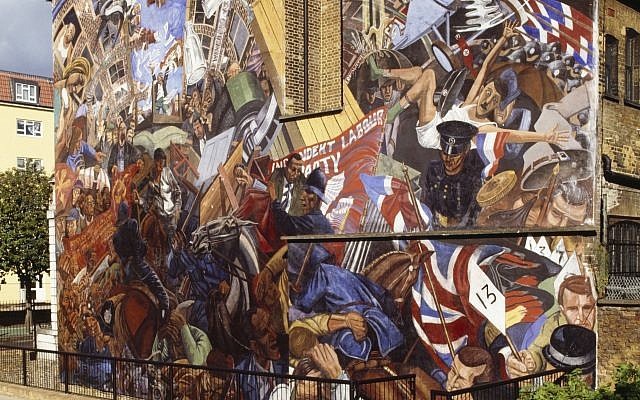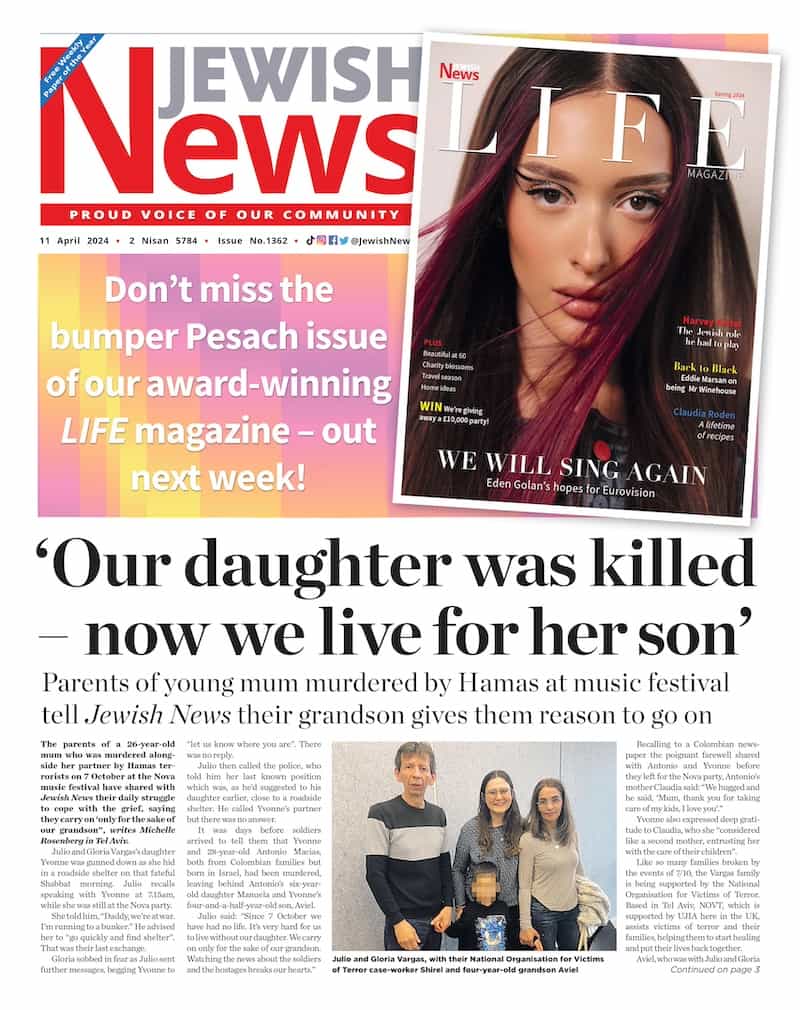Cable Street in list of top 10 sites marking England’s ‘history of protest’
East End landmark where Jews faced-off against fascist thugs, is recognised in new high-profile campaign by Historic England

Cable Street in East London has been identified as one of the top 10 landmarks in England’s “history of power, protest and progress”.
The accolade has been awarded in a high-profile national campaign launched this week by Historic England.
The East End street where Jews famously fought fascist thugs in the 1930s is listed by historian David Olusoga in Irreplaceable: A History of England in 100 Places as being among the most iconic sites that “bring to life England’s rich history”.
The Battle of Cable Street took place on Sunday 4 October 1936. Anti-fascist protesters, including local Jewish, socialist, anarchist, Irish and communist groups, clashed with the police who were protecting a march by the British Union of Fascists, known as the Blackshirts, led by Oswald Mosley.
By the 1930s, around 183,000 Jews lived in London, mostly in the East End. Exacerbated by the Great Depression, deprivation fostered anti-Semitism and some neighbouring communities blamed Jews for worsening conditions. By 1936, Oswald’s fascists had become the largest organised anti-Semitic force in Britain.
Hearing of the protest, those opposed to the Mosley march blocked various routes into the East End, the last of which was Cable Street, shouting: “They shall not pass!”

About 6,000 police tried to clear the area, and began attacking those building barricades.
The protesters fought back with sticks, rocks, chair legs and other improvised weapons. Rubbish, rotten vegetables and the contents of chamber pots were thrown at police by women in houses along the street. It worked – Mosley was forced to march his troops back.
“Although this was a violent protest, as a nation we should be more aware and proud of the Battle of Cable Street,” Olusoga says.
Other selected sites include the operations room bunker from where the Battle of Britain was coordinated, the Manchester laboratory in which Ernest Rutherford pieced together the structure of the atom, and a sycamore tree in Tolpuddle, Dorset, under which workers agreed to form what became the first trade unions.

Thank you for helping to make Jewish News the leading source of news and opinion for the UK Jewish community. Today we're asking for your invaluable help to continue putting our community first in everything we do.
For as little as £5 a month you can help sustain the vital work we do in celebrating and standing up for Jewish life in Britain.
Jewish News holds our community together and keeps us connected. Like a synagogue, it’s where people turn to feel part of something bigger. It also proudly shows the rest of Britain the vibrancy and rich culture of modern Jewish life.
You can make a quick and easy one-off or monthly contribution of £5, £10, £20 or any other sum you’re comfortable with.
100% of your donation will help us continue celebrating our community, in all its dynamic diversity...
Engaging
Being a community platform means so much more than producing a newspaper and website. One of our proudest roles is media partnering with our invaluable charities to amplify the outstanding work they do to help us all.
Celebrating
There’s no shortage of oys in the world but Jewish News takes every opportunity to celebrate the joys too, through projects like Night of Heroes, 40 Under 40 and other compelling countdowns that make the community kvell with pride.
Pioneering
In the first collaboration between media outlets from different faiths, Jewish News worked with British Muslim TV and Church Times to produce a list of young activists leading the way on interfaith understanding.
Campaigning
Royal Mail issued a stamp honouring Holocaust hero Sir Nicholas Winton after a Jewish News campaign attracted more than 100,000 backers. Jewish Newsalso produces special editions of the paper highlighting pressing issues including mental health and Holocaust remembrance.
Easy access
In an age when news is readily accessible, Jewish News provides high-quality content free online and offline, removing any financial barriers to connecting people.
Voice of our community to wider society
The Jewish News team regularly appears on TV, radio and on the pages of the national press to comment on stories about the Jewish community. Easy access to the paper on the streets of London also means Jewish News provides an invaluable window into the community for the country at large.
We hope you agree all this is worth preserving.





















